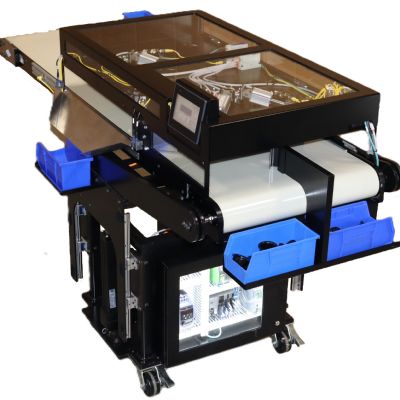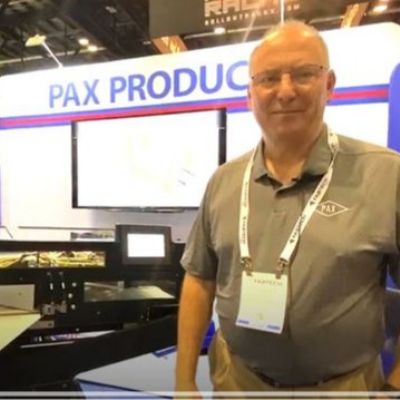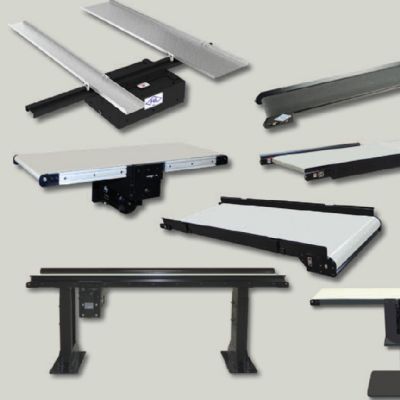Drive Automotive Drives Scrap Underground
September 1, 2015Comments
...via a fleet of 43 conveyors tasked with moving some 2500 tons of steel scrap per week down and out of its more than 1 million-sq.-ft. stamping plant. Here we detail the technology that keeps the conveyors, and the scrap, moving.
Christened in March 1995 to support the BMW assembly facility in Greer, SC, the Drive Automotive Industries of America, Inc. plant in nearby Piedmont has grown considerably and consistently. In fact, the 1 million-plus-sq.-ft. facility recently grew by another 30,000 sq. ft. to make room for its third blanking line, commissioned this past July.
From humble beginnings with one tandem press line and one scrap conveyor, the plant (part of the Cosma/ Magna group of companies) now counts —in addition to its three blanking lines —five tandem lines (four hydraulic and one mechanical), a transfer press and three progressive-die presses. Stamping parts as small as muffler brackets to as large as full body sides, from steel and aluminum, that press lineup yields some 2000 to 2500 tons of steel scrap per week, and another several hundred pounds of aluminum scrap. Following the installation of a new series of scrap conveyors to accommodate the recently added blanking line, the plant now hosts 43 conveyors that move the scrap underground to staging areas and, ultimately, to scrap trailers. “We have two separate scrap-staging areas, one for steel and one for aluminum,” shares Drive Automotive project manager Frank Dressler, “and a system set up to route the scrap. The scrap-system PLC communicates with the individual press controls to direct the scrap appropriately using shuttle conveyors linked to the main hinged-steel-belt conveyors.” Moving such a great volume of scrap requires reliable conveyors, “and that’s exactly what we have,” says Dressler, praising the plant’s decision made some 20 years ago to rely on German conveyor manufacturer Goessling (with U.S. operations in Johnson City, TN). “We originally tried rubber-belt conveyors,” recalls Dressler, harking back to the early 1990s when he worked for a Cosma group company in Germany. “However, the belts deteriorated prematurely from the sharp scrap. The switch to steel belts eliminated that concern.” Dressler notes several additional benefits realized by conveyor-design features, including hinged belt segments fabricated in one piece, from cold-rolled steel, across the total effective width of the conveyor. “This, along with the conveyor side rails, eliminates any gaps,” says Dressler, “that might allow scrap, particularly small, thin pieces, to fall between the segments and cause problems, such as jamming the conveyor drive motor.” “All of the tension,” Dressler notes, “absorbs through the rollers of the chain and not the hinged belt pins, helping to maximize belt life. In fact, we just replaced one of the oldest belts in the plant, installed in 1997, after 19 years of practically 24/7 operation.” Shuttle Action From its first press line and conveyor added in 1994 to the most recent blanking line, the growth of the facility has been consistent over the years. In 1996 the facility welcomed its first transfer press; a second tandem line moved in in 1997, followed in 1999, 2003 and 2012 by the third, fourth and fifth tandem lines. And they’re all major scrap makers.
While all of the plant’s scrap-moving conveyors are fixed to frames bolted to the basement floor, several shuttle-style units can move within their frames to index to a range of positions. This allows the scrap, which funnels down from the presses above, to route to the appropriate collection area as directed by the press PLCs. “The conveyor under each press acts as a buffer system,” says Dressler, “and accumulates scrap. Once the belt fills, the system PLC communicates with the press and indexes the shuttle conveyor to direct the scrap to the appropriate container. Once a scrap trailer fills to capacity, the system PLC sends an e-mail to our scrap-collection provider, alerting them to exchange the full container for an empty one.” Minimal Maintenance Required Dressler, who managed the plant’s maintenance department until 2013, knows first-hand the relative maintenance-free operation of its slew of conveyors. The U.S. office sends technicians into the plant once or twice per year to inspect the conveyors and perform basic preventive maintenance such as lubricating the bearings and checking and adjusting belt tension as needed. “The service technicians provide a complete report on all of the conveyors,” says Dressler, “and include photographs that illustrate any findings that might require attention, now or in the near future.” MF See also: Goessling USA, Inc. Technologies: Pressroom Automation
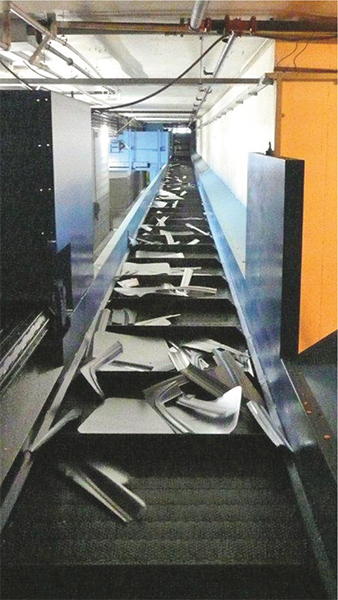
Moving thousands of pounds of scrap underground and out of the Drive Automotive plant falls on the shoulders of 43 hinged steel-belt conveyors, most similar to the one shown here. The facility stamps parts as small as muffler clamps and as large as full body sides.
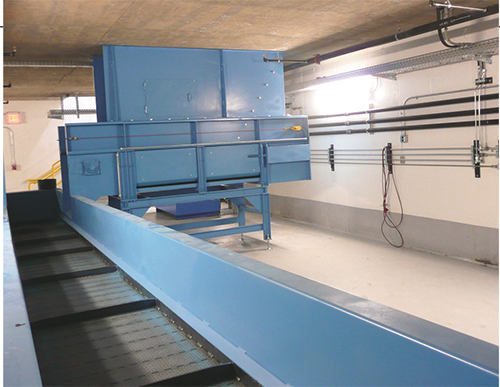
Here’s the newest Goessling conveyor installed at the Drive Automotive plant, added this past July to serve a new blanking line—the plant’s third.







